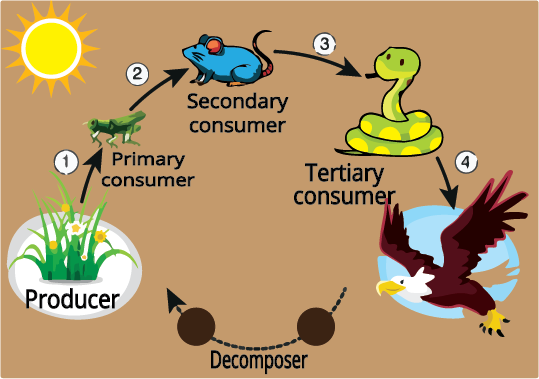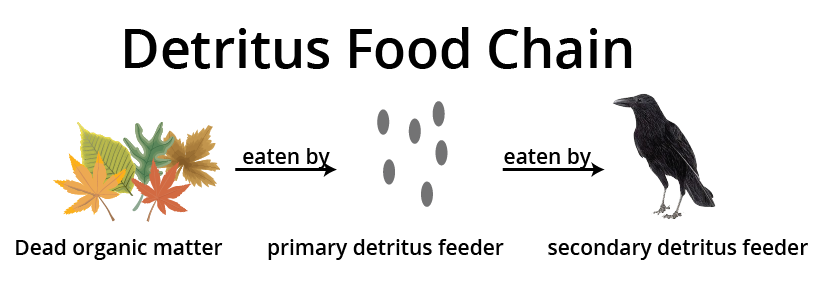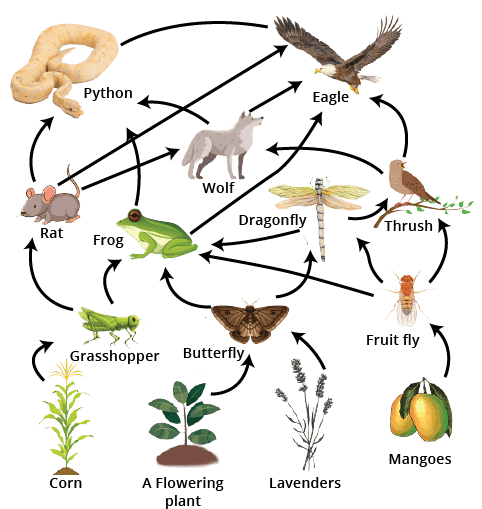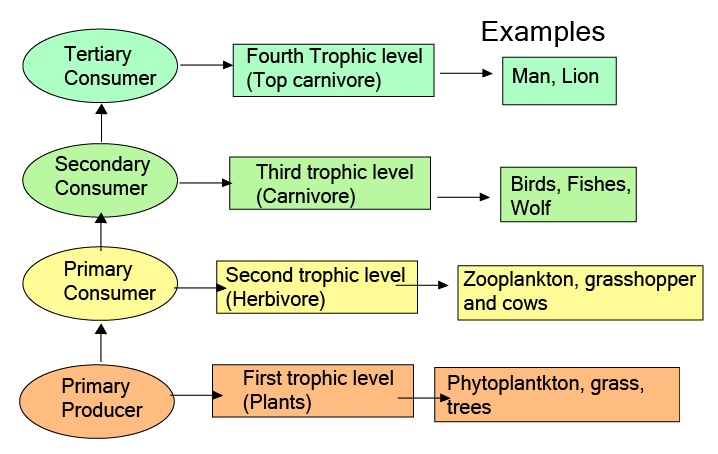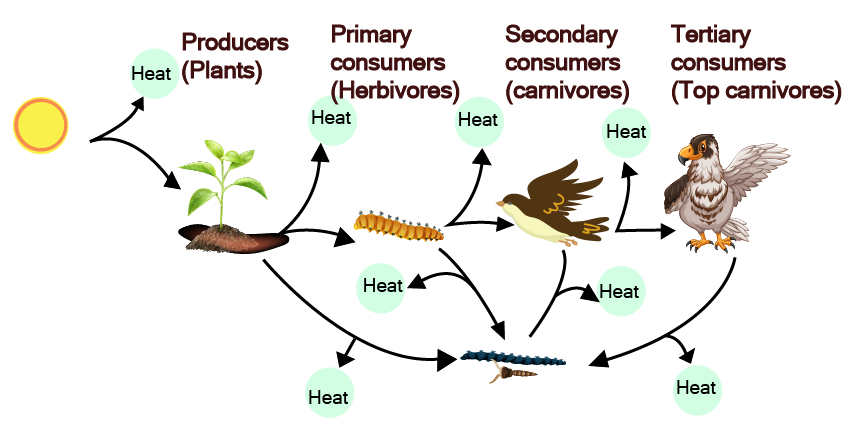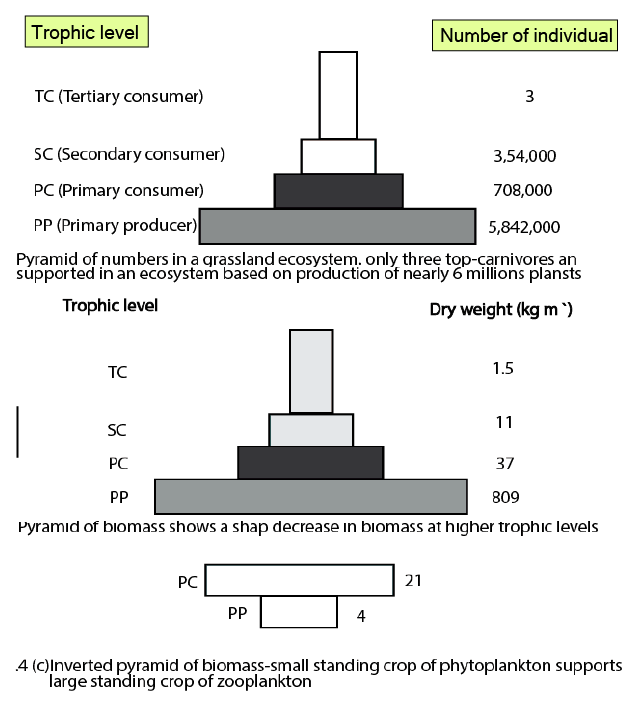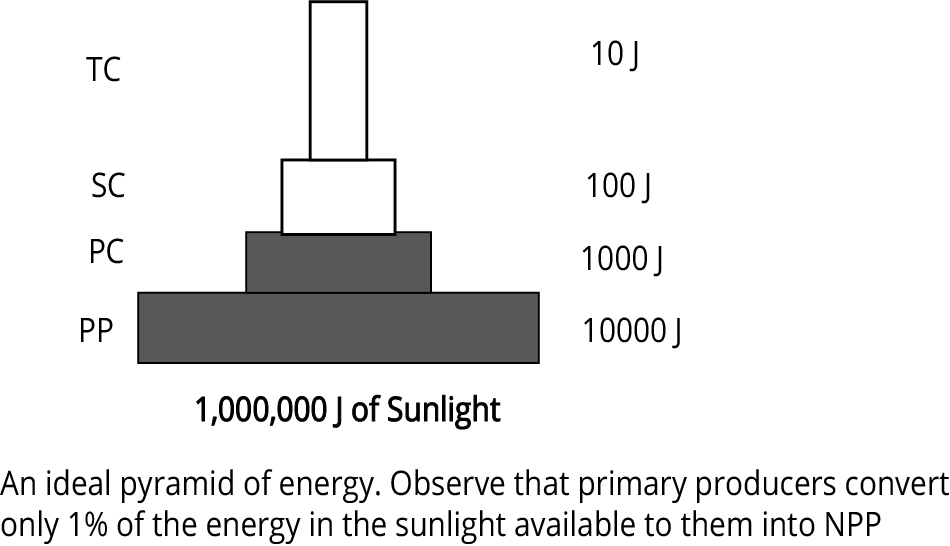CBSE Biology Chapter 12 Ecosystem Notes Class 12 - FREE PDF Download


FAQs on Ecosystem Class 12 Notes: CBSE Biology Chapter 12
1. Define Ecosystem and describe its Types.
An ecosystem can simply be defined as the functional unit of nature with which living organisms survive and interact among themselves and with the physical environment that surrounds them. Ecosystems can broadly be classified into natural and man-made. Natural ecosystems can further be bifurcated into (a) Terrestrial Ecosystems - these include grasslands, deserts, forests, etc. and (b) Aquatic Ecosystems - these ecosystems include water bodies such as wetland, lake, river, estuary, etc. On the other hand, aquariums, croplands etc, are man-made ecosystems.
2. What are the Functions of an Ecosystem?
The major or primary function of an ecosystem is the conversion of inorganic materials to organic matter. The steps involved in the conversion of inorganic materials to inorganic matter are described below:
The plants take up the radiant energy from sunlight
The heterotrophs consume various plants or autotrophs resulting in the transfer of organic matter
Dead organic matter is mineralized and decomposed which releases nutrients back into the soil for reuse by the autotrophs
Repetition of the same phenomena over and over again
3. What are the various Steps involved in Decomposition?
Decomposition is the breaking down of complex organic substrates into simpler inorganic forms by decomposers, The various steps of decomposition are:
Fragmentation - breaking down of detritus into smaller particles by the action of detrivores such as fungi, earthworm, etc.
Leaching - download movement of water-soluble nutrients into the soil horizon and their precipitation as insoluble salts.
Catabolism - break down of detritus into simpler inorganic forms by enzymes from fungi and bacteria
Humification - formation and continuous deposition of a dark amorphous substance known as the humus.
Mineralisation - the further breakdown of humus by some microorganisms to form simple inorganic nutrients.
4. Are the Class 12 Biology Chapter 12 Notes beneficial?
The CBSE Class 12 Biology Chapter 12 Ecosystem Notes by Vedantu have been carefully drafted by experts keeping in mind the needs of the students. The Class 12 Chapter 12 Biology Notes have been prepared in a concise manner so that students can have a proper understanding of the chapter and are familiar with all the important topics. The Biology Class 12 Ecosystem Notes PDF are also available for download free of cost so that students are able to access them offline as well.
5. What is an ecosystem according to Chapter 12 Ecosystem of Class 12 Biology?
Class 12 Biology Chapter 12 discusses the ecosystem which is a unit of nature. An ecosystem is a concept that describes the interdependence of living beings on one another and also about their survival strategies. Further, it goes on to talk about the interactions that living beings have with their immediate surroundings to sustain and survive in that particular surrounding or population. This is an important chapter and must be read in detail for your exam.
6. What is the aquatic ecosystem according to Chapter 12 Ecosystem of Class 12 Biology?
Ecosystem is chapter 12 from Class 12 Biology in the CBSE syllabus. The ecosystem is basically nature's functional unit that has four main components and it deals with both the terrestrial and aquatic life Aquatic Ecosystem refers to the natural ecosystems that are all related to water bodies in some way or the other. Examples of aquatic water bodies are lakes, ponds, rivers, oceans etc where we find various biotic and abiotic components. You will get questions from this chapter in your board exam and hence you must study carefully and in detail.
7. What is the Artificial ecosystem?
Vedantu, the online learning website has study materials for all classes and all subjects for the ease of students. So it also has notes for the Ecosystem chapter that describes the relationship of living organisms in an environment among themselves and with their surroundings in order to survive. Relating to this concept these days we get to see many man-made ecosystems these days that are artificially created with living and nonliving organisms and provided with all the necessary conditions is known as artificial ecosystems.
These solutions are available on Vedantu's official website(vedantu.com).
8. Which revision notes are the best for Chapter 12 Ecosystem of Class 12 Biology?
The Revision Notes for “Ecosystems”, which is Chapter 12 of the Class 12 Biology NCERT book are available to access from the site of Vedantu. These notes on ecosystems help students develop extended knowledge on the topics that they have already studied in the chapter of their book. Here, you will find topic wise notes on the ecosystem and its components for you to prepare from before you appear for your Class 12 Biology board examination.
9. How can I get the Chapter 12 Ecosystem of Class 12 Biology revision notes online?
It is very easy to find the revision notes for Class 12 Biology Chapter 12 Ecosystem online on Vedantu. Visit Vedantu’s website. After that, go to the study materials section on the website. Under this section, you will find the “Revision Notes'' section. From here, select Class 12. Then, select Biology as the subject. A list of the chapter-wise revision notes will open up. Select Chapter 12 and you’ll find the ecosystem revision notes. Download the PDF file on your device by clicking on the download PDF option.
10. What is an ecosystem?
An ecosystem is a system formed by the interaction of a community of organisms with their physical environment. It includes both biotic factors (living organisms) and abiotic factors (non-living components like air, water, and minerals).
11. What are the main components of an ecosystem?
The main components of an ecosystem are biotic (producers, consumers, decomposers) and abiotic factors (climate, soil, water, and sunlight).
12. What is the role of producers in an ecosystem?
Producers, or autotrophs, are organisms that make their food through photosynthesis (like plants) or chemosynthesis (like some bacteria). They form the base of the food chain by providing energy to other organisms.
13. What are consumers?
Consumers are organisms that obtain energy by eating other organisms. They are classified into primary consumers (herbivores), secondary consumers (carnivores that eat herbivores), and tertiary consumers (carnivores that eat other carnivores).
14. What are decomposers and their role?
Decomposers, such as bacteria and fungi, break down dead organic matter into simpler substances. They play a crucial role in recycling nutrients back into the ecosystem, which helps maintain soil fertility.























